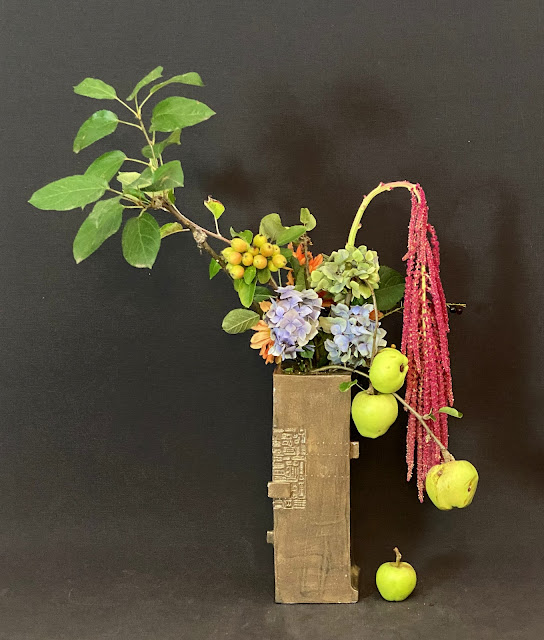
My strelitzia nicolai plant produces huge leaves, which are almost impossible to use in an arrangement unless they are cut down somehow. So, it was a delightful surprise to find a small one growing from the bottom of the trunk. I cut it and placed it in a heavy, ceramic container with two openings and added a mass of gloriosa lilies. The lilies did not last very long, so I replaced them with a single sunflower. The leaf is likely to last for weeks and I'm loath to throw it away, so I'll keep replacing the floral material until it dies.
Bredenia used fig branches, kiwi vine with fruit, hydrangeas and Japanese maple in a heavy, ceramic container.
Vicky's material was osage oranges and was particularly challenging because the fruit are very heavy and likely to drop. She used oriental lilies facing different directions to make it pleasing to view from all sides.
By coincidence, Dianne's class theme was 'To be Viewed from all Sides'. She used one nandina domestica branch and dahlias in a vase with split on two sides.
Shaneen is doing revision and chose her 'favourite' lesson - In a 'Suiban Without a Kenzan'. She used Japanese maple, coprosma and alstroemerias in a rectangular suiban.
Wendy's class theme was 'Keeping in Mind the view from Below'. She used oak branches with acorns, oriental lilies and a fine, mauve material, the name of which escapes me.
Bye for now,
Emily












































